The Great Journey Calls All Units: Halo Wars
By Darth_Navster 5 Comments
This is the latest in a series of retrospective write-ups where I relate my experience playing through the campaigns of the Halo series all over again, this time in the remastered form of The Master Chief Collection. You can find previous posts in The Great Journey here:
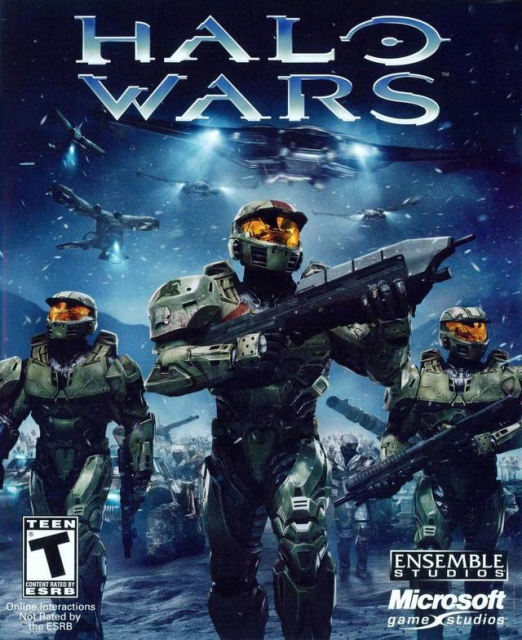
Welcome back to the final entry of The Great Journey as we board the UNSC Spirit of Fire! Once again, we step away from the Master Chief’s adventures (and by extension, The Master Chief Collection) and conclude the retrospective with Halo Wars. The game, developed by Ensemble Studios as their swan song, stands apart from the rest of the series by expanding Halo’s scale to focus on the entire battlefield. Indeed, this real-time strategy (RTS) take on humanity’s struggle against the Covenant is a big shift from the established Halo formula. However, by adapting a traditionally PC oriented genre to consoles, Halo Wars taps into the spirit of Halo better than any game in the franchise since Master Chief’s debut on the original Xbox. But seven years after its release, does the game’s console-RTS ethos hold up? Let’s dive in and find out.
The game opens 20 years prior to the start of Halo: Combat Evolved at the Battle of Harvest. The battle, one of the first in the Human-Covenant War, proved to be a long, brutal affair in which humanity was able to retake the colony of Harvest at great cost in both resources and human life. It’s in the aftermath of this that the crew of the UNSC ship Spirit of Fire, led by Captain James Cutter, is sent to investigate Covenant activity on the planet’s surface. Cutter directs his Sergeant, John Forge, to rally troops on the ground and find out what exactly the Covenant are interested in.
This first mission acts as a tutorial, teaching the basics of controlling an RTS with a gamepad. The player is tasked with navigating Forge’s Warthog through several skirmishes with Covenant Grunts as he meets up with UNSC soldiers, at which point they come under the player’s control. The basics of commanding troops are pretty intuitive; A button to select units, X and Y buttons to direct units with contextual actions, and the bumpers to select either local or all units (complete with the eminently silly “ALL UNITS” soundbite). For the most part it works to allow you to control large armies, but falls apart once you try to micromanage as you would with a mouse. Ensemble wisely sidestepped this issue by balancing the combat to make mass attacks a viable strategy, and it becomes clear early on that the game is all about larger clashes between many units. This fits neatly into Halo’s focus on scale. Deep, surgical strategizing is replaced by Elites, Spartans, tanks, and aircraft all clashing at the same time, approximating something that feels like what players have seen countless times on the ground in previous games.
After a relatively straightforward first mission that ends with UNSC forces retaking an old base, the second mission has the player staging an assault from said base to prevent the Covenant from blowing up their discovery. It’s in this mission that we’re first introduced to base building. Unlike traditional RTS games, the base building in Halo Wars is much more constrained. The game pre-determines base building zones in which a main structure is airdropped in. From there, the exterior of the base can have up to seven set pods in which structures can be built. These structures include supply pads which generate currency to spend, barracks which train footsoldiers, reactors which increase your tech level (allowing for new upgrades), and armories enabling you to research bonus abilities. This sets up an interesting dynamic in which the main constraint to building isn’t cash flow, but rather real estate. Indeed, it’s almost impossible to get to the upper echelons of the tech tree with a single base, and players are compelled to constantly jockey with opponents over precious base building sites. This design decision, while coming off initially as the designers not trusting players to properly manage their base, has the benefit of preventing turtling strategies common in many RTS games. It also helps to manage the pace of a skirmish, as it’s very difficult to set up an effective tank rush in the early goings with only one base under a player’s control. That’s not to say you can’t bumrush an opponent with a dozen Warthogs or Ghosts at the start, but the game pushes players to focus on smaller objectives such unclaimed bases and Forerunner structures before mounting an attack on their opponents.
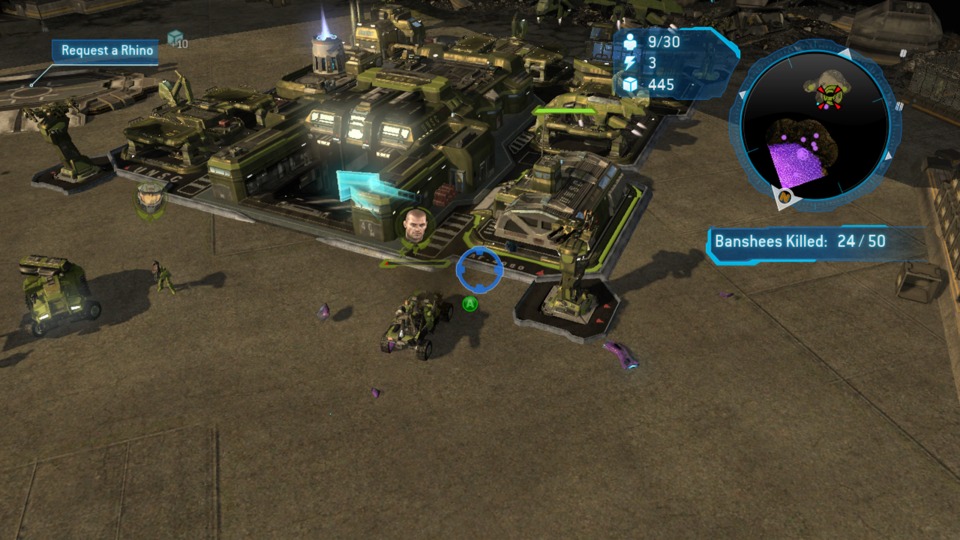
Once the UNSC forces successfully stop the Covenant from covering their tracks, the Spirit of Fire’s chief researcher, Professor Ellen Anders, is dispatched to investigate the artifact that the enemy had found. She quickly deduces that the artifact is a map pointing to the human colony planet of Arcadia, but before they can head back to the ship they are pinned by Covenant reinforcements. The third mission, Relic Interior, gives the player two Grizzly tanks placed behind enemy lines that are tasked with rescuing Forge, Anders, and their accompanying marines. The mission is relatively straightforward, and evokes previous Halo missions that give the player access to a tank, mainly because you feel like an invincible badass carving up the Covenant. It also comes as a nice change of pace, showing that Halo Wars can still be compelling even if you control only one or two units. Granted, those units are incredibly powerful and require little strategy to be effective, but having a small scale battle in an indoor environment feels refreshing after the first two missions got a little bogged down in tutorializing. In any case, the Grizzlies eventually succeed in their mission and our protagonists make their way to Arcadia.
As the Spirit of Fire arrives at Arcadia it becomes clear that the planet is under attack by Covenant forces. The ship’s crew touches down on the planet’s largest city to aid in the evacuation of civilians. While the level reads like a typical escort mission, the game offsets this by introducing Spartans. While they remain under AI control here, seeing Spartans (plural!) take the field is exhilarating. Though this made a bigger splash in 2009 (before Halo Reach showed us multiple Spartans in action), it’s still pretty cool to see John-117’s compatriots blasting away with chainguns, SMGs, and Spartan Lasers. While the Spartans aid in the evacuation, the player is given control of Hornet aircraft for the first time. These nimble units are able to cover a lot of ground and the mission quickly becomes an exercise in dealing with Covenant ships dropping off attack squads around the map before they can do major damage.
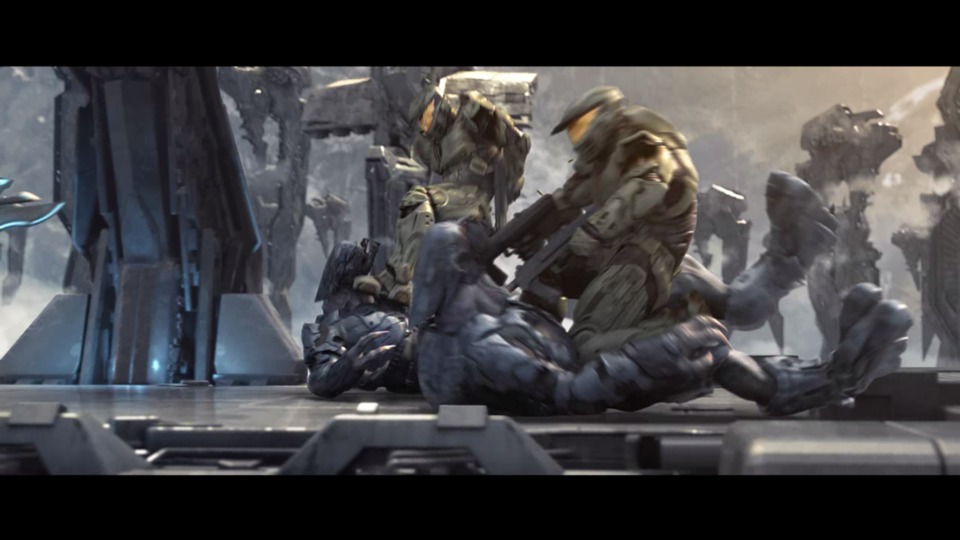
Upon successful completion of the evacuation, the player is given a base to hunker down in and await evacuation. I personally quite enjoy defensive oriented missions, and this one was no exception. Waves upon waves of Covenant funnel into a choke point allowing the defending forces to grind them up. Furthermore, players are finally given direct control of Spartans here, and they prove to be indispensable. Using the Spartans’ secondary hijack ability, I was able to commandeer the enemy’s Wraith tanks and eventually push the battle to the Covenant base. The battle felt like the best distillation of Halo Wars’s combat, a knock-down, drag-out fight with plenty of give-and-take between both sides.
The next two missions try to add some twists to the previous mission’s formula, and only partially succeed. The first of these missions, Dome of Light, has the player trying to crack a force field that is hiding some unknown Covenant activity in an ancient ruin. In order to do so, the player must position several modified tanks at specific locations to barrage and overload the force field. While there are plenty of Covenant opposition, specifically of the aerial variety, there isn’t a major enemy force on the ground that can be attacked. Rather, you’re going through the motions, ordering tanks to the required locations and defending them from damage as they get there. This is exacerbated by the fact that the game continually pulls the rug out from under the player by progressively increasing the number of tanks required to bring down the shield. Despite the dull set up, the mission ends on a high note by giving you control of an orbital gun to destroy the Covenant operation once the protective shield goes down.
At this point, the second mission (known as Scarab) begins, with the UNSC forces advancing into the Covenant base of operations. Unfortunately, the advance is blunted by a partially constructed Scarab tank guarding the entrance to the ruins. Due to the immense damage potential of the Scarab’s main gun, players must navigate units away from its gaze and destroy power nodes to slow down the speed in which the tank’s head turns. The intriguing setup is squandered, however, by giving the Scarab an insane amount of health that took minutes on end to fully chip away. It doesn’t help that the game’s heavy hitting units are typically very slow and unable to avoid the Scarab’s attacks very effectively. But that’s not the main problem with this mission or Dome of Light. Rather, the big issue is that neither mission pits the player against a significant enemy force. You’re either facing a giant forcefield or a giant, immobile tank. Both of these foes simply sit there until the player has done the seemingly unrelated tasks to complete the mission. There is no punch-counterpunch with these foes, and as such it doesn’t feel like much is being accomplished. Thankfully, the back half of the game switches things up, both narratively and mechanically.
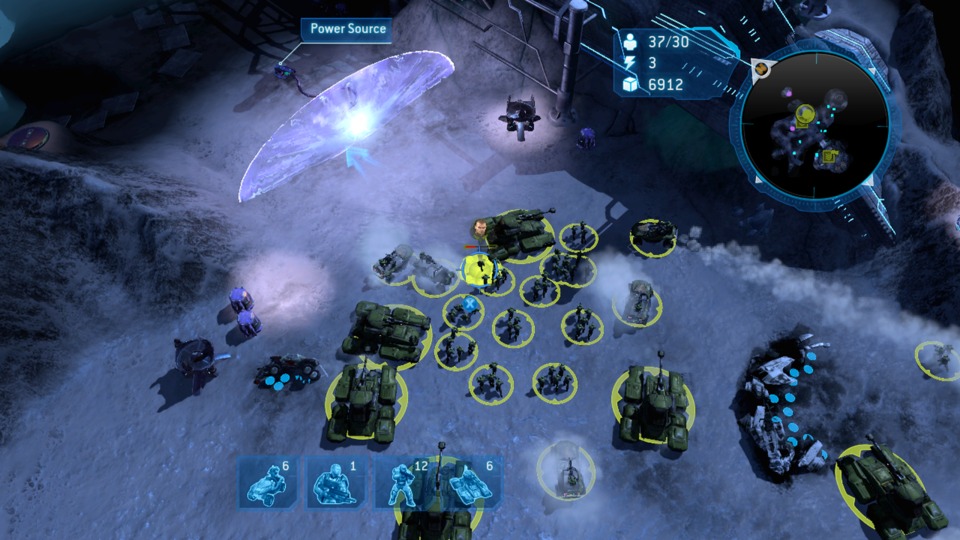
While Forge and Anders are investigating the wreckage of the Scarab from the previous mission, they are attacked and Anders is kidnapped by an Arbiter who believes that she can help find what the Covenant are seeking. Using her transponder to track where the enemy is headed, the Spirit of Fire makes an FTL leap to an uncharted planet. As Forge and the rest of the ship’s crew investigate the planet’s surface, they come into contact with two new enemies. The first are the Covenant Brutes, the apelike enemies first introduced in Halo 2, and the second are the Flood. While canonically the introduction of the Brutes works, seeing the Flood is a bit jarring as they were first encountered by humanity during the events of Halo: Combat Evolved. I understand the developers wanting to include as many elements of Halo in their game, and I get that with Halo Wars’s ending it technically works with the series canon, but it nevertheless feels unnecessary to include the parasites here. Also, unlike other Halo games, encountering the Flood doesn’t really require a change in tactics. Throw enough units at the problem and it goes away, just like the Covenant. Nevertheless, the next three missions, Anders’ Signal, The Flood, and Shield World, specifically focus on rallying UNSC troops who are pinned down by the Flood. They are a step up from the previous two missions in that you now have an enemy on the ground to fight, but the limited amount of Flood unit types make the encounters feel more generic than tussles with the Covenant. Thankfully, the game switches things up with two missions that take place on top of the Spirit of Fire.
After successfully rallying and evacuating forces from the grasp of the Flood, the Spirit of Fire becomes ensnared in a gravity well pulling the ship inside the planet. In what are easily the most audaciously designed missions in the campaign, Cleansing and Repairs, players are tasked with protecting the ship from Flood and Covenant by building and producing units on its hull. For the first time, players are forced to think in three dimensions as Flood adhere to the sides of the ship which ground troops cannot reach. The game also requires players to be more flexible in how they defend their base, as it is much more spread out than in standard skirmishes. This all comes together for some nail biting combat as you desperately try to repel the Flood and repair the ship’s engine, making hard decisions on what to sacrifice in order to achieve your main objectives. The only downside is that the relatively solid endgame feels like a bit of a letdown after these unique missions.
The last three missions, Beachhead, Reactor, and Escape, are all decent enough from a gameplay standpoint, however they feel largely disconnected from the plot and so lack a narrative thrust. In Beachhead, Anders manages to escape Covenant bondage and meets up with Forge, telling him that the enemy intends on using the planet’s Forerunner technology to mass produce an advanced armada capable of crushing humanity. In an effort to put an end to this, Cutter decides to use his ship’s FTL drive to blow up the planet. Players are tasked with establishing the namesake beachhead to act as a staging ground to deliver the bomb. The mission plays like a skirmish as you clear the area of Covenant and Flood forces. The one neat twist here is that you can get a Spartan to hijack an abandoned Scarab to make short work of any opposition. The next mission, Reactor, has you escorting the reactor core to its designated area while being attacked by Covenant. Finally, the last mission, Escape, has you punching a hole in the planet’s inner surface to allow for the Spirit of Fire to get out safely before the planet is annihilated.
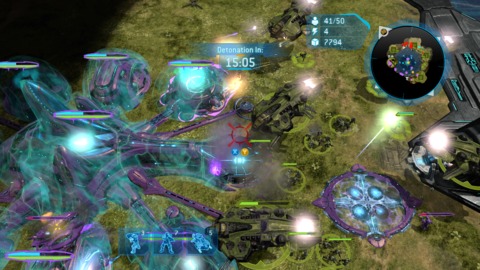
The issue with these missions is that the real action is happening with Forge and his crew of Spartans. This is starkly apparent in the cutscene prior to the last mission where we see Forge finally killing the Arbiter and Spartans taking down Elites in stylish fashion. It is also Forge that activates the bomb and saves the day, leaving the player as a mere facilitator. As a result, this brings unwanted focus on the fact that the player’s role in the story is never clarified. You aren’t playing as any of the main characters like you would in a standard Halo game, nor are you a faceless general akin to StarCraft or Command & Conquer. The game makes clear that the chisel-jawed Sergeant Forge is supposed to be the protagonist (and gave him Nolan North’s voice to clear up any doubt), but I never felt ownership of his actions at any point. It created an odd distance between me and the story, and had me caring less and less about the characters as the campaign proceeded. By the time that the Spirit of Fire had accomplished her mission, her crew in cryo sleep awaiting rescue, I couldn’t help but feel disappointed in the narrative arc as a whole.
Of course, that’s not to say I hated the campaign. There certainly were flashes of brilliance spread throughout, and the fundamental gameplay felt good despite being a tad too shallow. Halo Wars has lost a bit of shine since its release, as the novelty of a non-shooter Halo game has waned a little in the intervening years. Nevertheless, as an experiment, the game largely succeeds by accurately mimicking everything from Martin O’Donnell’s somber score to the way that Banshees bank when they turn. If this sounds like Halo Wars tends to prioritize style over substance, it’s because that is precisely what the game does. I don’t say this as a criticism. After all, this is a Halo RTS, created for and marketed to fans of the franchise. For the game to succeed, it needed to fully replicate the trappings of its iconic forebearers. Ensemble clearly understood how important it was to get the small details right and how to marry them with a decently compelling RTS core. The resulting package is well worth any Halo fan’s time.